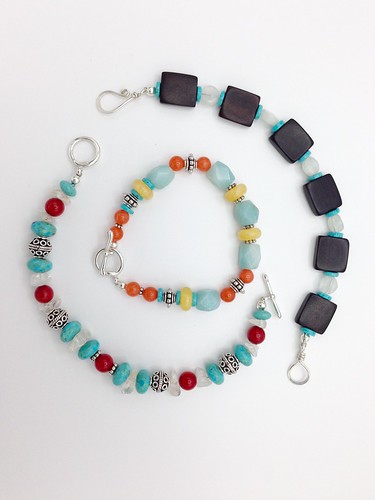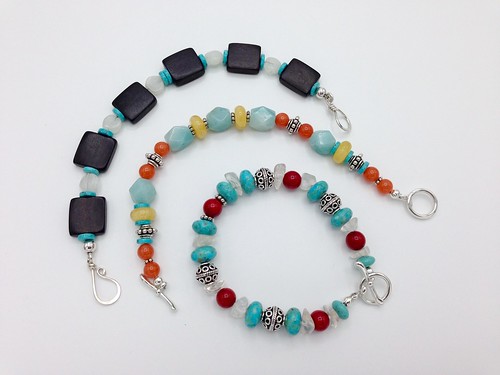Yesterday I was all set to post about three bracelets I made. Here they are -
That's the shot I took today.
You can't tell I had to rework the one on the top right can you?
Actually I had to restring it 3 times.
3 times!!
Not a big deal, but it took me many extra minutes. Wasted materials. And made me frustrated and annoyed with myself. All because I didn't check my work.
See how they were when I thought I was good to go?
That's the shot I took today.
You can't tell I had to rework the one on the top right can you?
Actually I had to restring it 3 times.
3 times!!
Not a big deal, but it took me many extra minutes. Wasted materials. And made me frustrated and annoyed with myself. All because I didn't check my work.
See how they were when I thought I was good to go?
Can you spot my mistake?
Gah!!!
So the lesson here is to check your work. Before you finish the step that completes your project, give it a good once over. By tinkering on the same piece for a while, you can expect to see it a certain way even if it isn't. Kind of a confirmation bias if you follow. You need to step back and evaluate what you've done. Really be sure you have it right before you commit. A few extra seconds can save you a lot of heartache!


Comments
Post a Comment